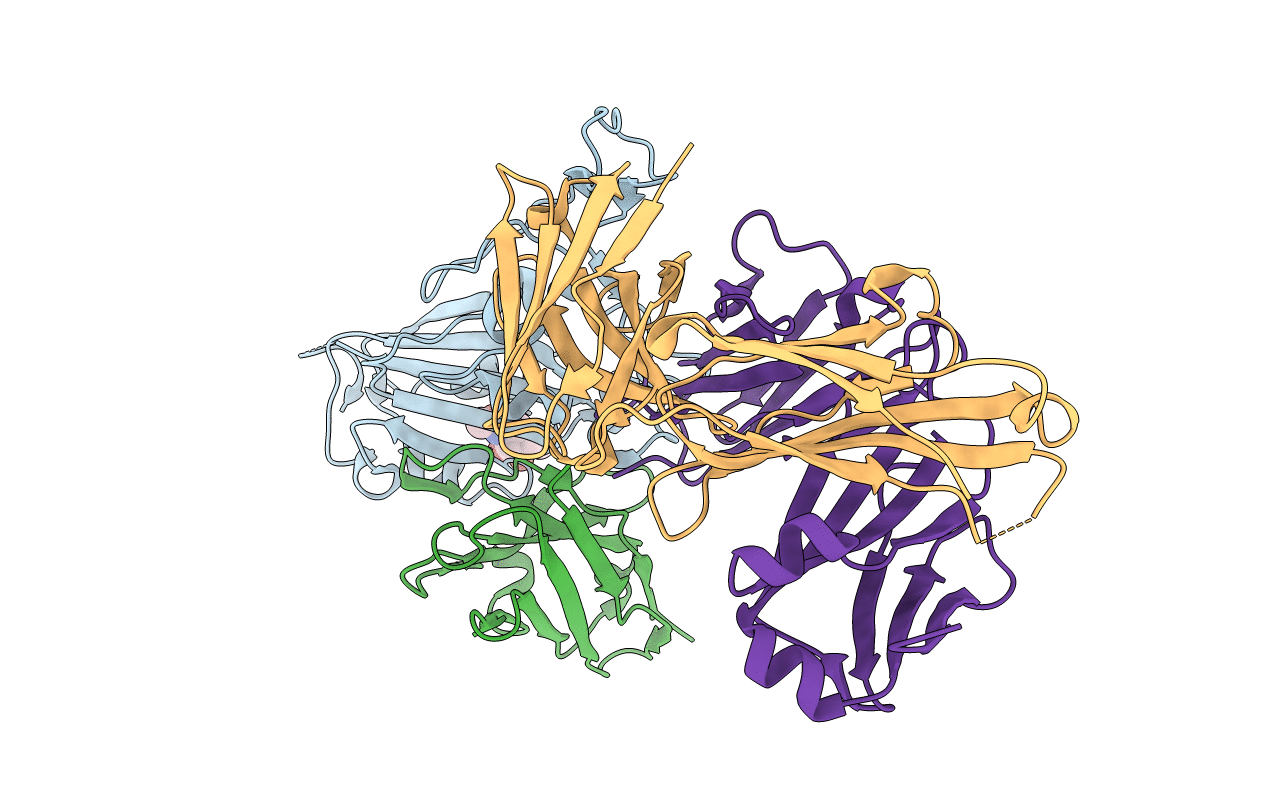
Deposition Date
2020-11-04
Release Date
2021-01-20
Last Version Date
2024-11-06
Entry Detail
PDB ID:
7KN6
Keywords:
Title:
Crystal structure of SARS-CoV-2 receptor binding domain complexed with nanobody VHH V and antibody Fab CC12.3
Biological Source:
Source Organism:
Severe acute respiratory syndrome coronavirus 2 (Taxon ID: 2697049)
Vicugna pacos (Taxon ID: 30538)
Homo sapiens (Taxon ID: 9606)
Vicugna pacos (Taxon ID: 30538)
Homo sapiens (Taxon ID: 9606)
Host Organism:
Method Details:
Experimental Method:
Resolution:
2.55 Å
R-Value Free:
0.23
R-Value Work:
0.19
R-Value Observed:
0.19
Space Group:
C 1 2 1


